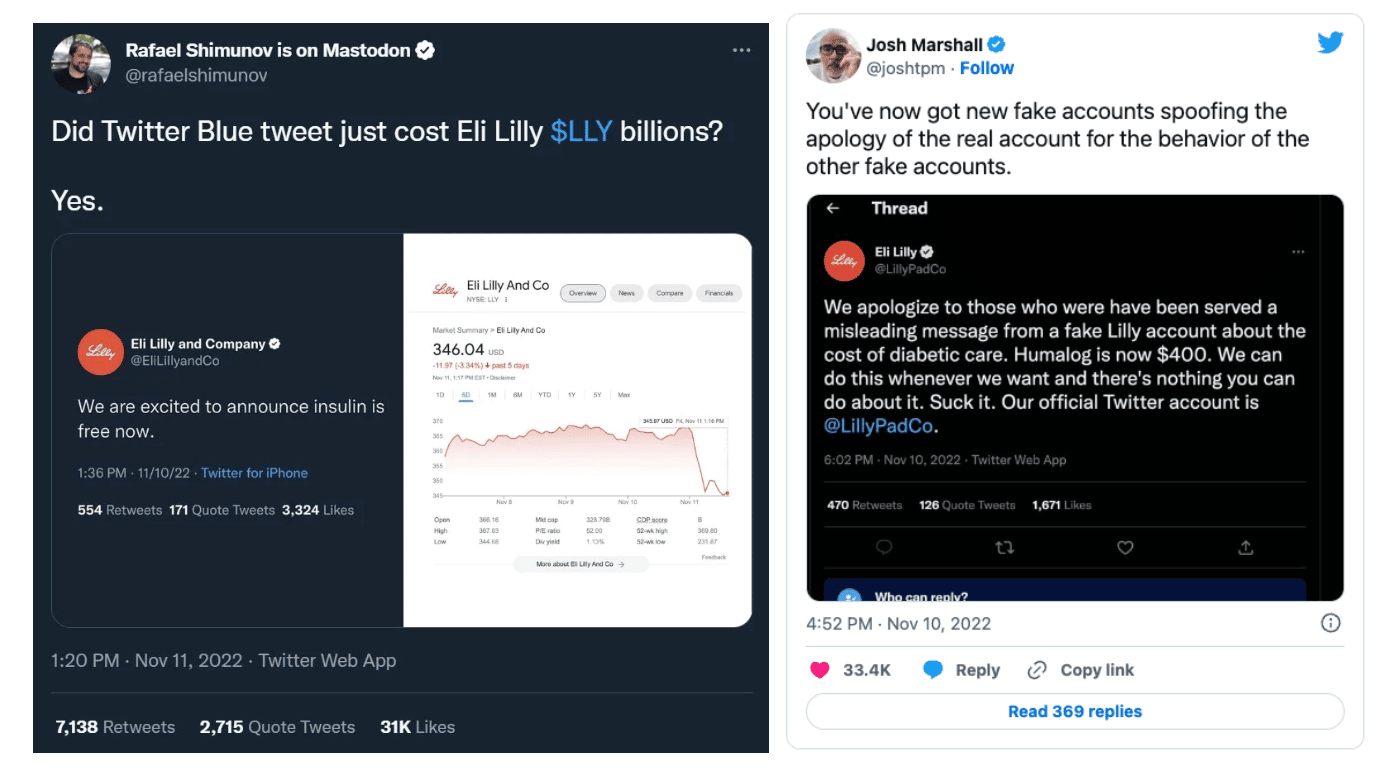By Nathan Dupirack, Director of Product
November has been an action-packed month in identity and customer account management. Between a Taylor Swift concert and a Twitter takeover, two significant events have dominated headlines recently — but not with the type of coverage any brand wants. You see, not everything on the digital front has gone smoothly. This month has exposed one of the biggest emerging threats that identity teams need to combat: preventing and detecting fake user accounts on digital platforms.
In just a couple of weeks, we’ve seen two high-profile examples of the challenges that fake user accounts can present for digital businesses. In the first example, a social media platform rolled out a new paid verification feature. Users could secure a coveted verification mark on their profiles for a nominal fee, indicating that they were a verified brand or individual.
The problem was — users exploited gaps in this process to impersonate some of the world’s biggest celebrities and global brands, making it nearly impossible for the average user to distinguish the real accounts from the fakes. This oversight is expected to cost the social platform millions of dollars in ad revenue, with brands like Eli Lilly experiencing significant reputation damage due to this snafu.

Then, just last week, fake accounts made headlines again when the world’s biggest ticket provider held a pre-sales event for the (ahem!) concert event of the year. Using fake accounts, including bot accounts, ticket scalpers (or ticket brokers as they prefer to call themselves) secured millions of tickets to sell on the secondary market. In fact, so many tickets were sold during the pre-sale, that the ticketing company ultimately rescheduled the general sales event, leaving millions of legitimate fans empty-handed or facing resale prices that were thousands of dollars above face value.
Today’s solutions aren’t enough
With fake accounts proving themselves to be a major business and reputation risk for social and ticketing platforms alike, what can digital and security teams do to mitigate these threats? A host of solutions available claim to help address this problem. But on a closer look, these solutions are not enough on their own to thwart sophisticated bots and human-powered click farms from creating fake accounts.
Bot Mitigation Solutions: Traditional bot mitigation solutions are a great first step toward preventing bots from creating fake user accounts. The challenge with these solutions is that they are known to generate lots of false positives that can frustrate users, leading to abandonment. For this reason, these solutions are often tuned down, allowing more sophisticated bots and human-powered adversaries to bypass these defenses easily.
ID Check + Selfie Solutions: There are dozens of ID Verification solutions on the market (Gartner reports over 30) that offer the ability to digitally check a user’s ID (e.g. Drivers License, Passport) as a way to confirm that they are who they say they are. We’re seeing more digital businesses, such as AirBNB, roll out these solutions with new “Verified Account” features. However, these solutions have drawbacks as well, such as:
- Fake IDs – Like the bartender at your local watering hole, many of these solutions can be easily spoofed using fake IDs.
- User Friction & Privacy Concerns – Though ID verification solutions have become easier to use in recent years, they still introduce a multi-step process to end users, which can cause frustration and user drop-off. Many consumers also have privacy concerns and do not want to share this information with commercial brands.
- Cost – ID verification solutions are expensive, costing upwards of $1-2 per verification. This can be cost prohibitive for businesses that see millions of user registrations per year.
Forter Trusted Identities can Help
At this point you might be asking: how can digital businesses be effective at detecting and preventing fake accounts, without introducing costly user-friction and consumer privacy concerns?
Well, as Director of Product at Forter, you might call me biased— but our Trusted Identities solution offers the best (and only) fully integrated, and near-frictionless way for merchants to verify the authenticity of users that access their websites and services. Using Trusted Identities, user verification services could verify users automatically during the registration process or by presenting existing users with a simple “Verify your Account” button that returns a real-time decision stating whether the account is trustworthy. Bots and abusers would be immediately declined and legitimate users would get access to the services they want.
Consumers will increasingly demand smooth and safe transaction experiences, and brands will continually work to avoid making headlines like we’ve seen this month. Easy for me to say there’s a simple solution to both, but you don’t have to take my word for it. To learn more about Trusted Identities and schedule a personalized demo, visit https://www.forter.com/trusted-identities/.
Until then, I hope you enjoy a friction-free holiday season!
—
About Forter
Forter is the Trust Platform for digital commerce. We make accurate, instant assessments of trustworthiness across every step of the buying journey. Our ability to isolate fraud and protect consumers is why Nordstrom, Sephora, Instacart, Adobe, Priceline, and other leaders across industries have trusted us to process more than $500 billion in transactions. Click here to learn more.



